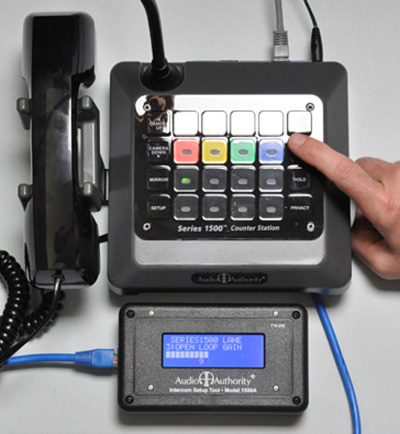 | | How Voice-Switching Works Both inbound and outbound audio channels remain open until the operator speaks. At this point, the inbound sound (customer's voice) is attenuated (reduced in volume). If the Open Loop Gain is at 16 (the highest setting), then the customer’s voice is not attenuated at all, and teller and customer can both talk simultaneously and hear eachother at full volume. As the Open Loop Gain setting is lowered, the customer’s volume is attenuated a bit more when the operator is talking. So, when the Open Loop Gain setting is low and the customer is talking, the operator's voice overpowers the customer's voice, or any noise in the lane. At very low Open Loop Gain settings, extraneous noise inside the building can trigger voice-switching; this prevents the operator from hearing the customer because the noise inside overpowers the incoming sound.
Why Open Loop Gain? The purpose of the Open Loop Gain setting is to allow the intercom to sound as natural as possible while eliminating feedback. Full duplex systems sound the most natural, but often have feeback loops. Ideally, the physical causes of feedback should be eliminated and Open Loop Gain should be set as high as possible. If it is impossible to remove all sources of feedback, try a lower Open Loop Gain setting. Be advised that a setting lower than 8 makes conversation more difficult; often the beginning of the customer’s phrase is not heard, and noises inside the building prevent the customer from being heard by the operator.
|
The Half Duplex Option
In noisy office environments, it may be necessary to use half-duplex - or "push-to-talk" mode, which requires the operator to hold the lane key in order to speak (the customer does not have to hold a key to talk). This mode allows the customer to be heard regardless of background noise inside the building.
Contact Audio Authority Technical Support with questions or see the Series 1500 Installer Guide  1.78 MiB . 1.78 MiB .
|

